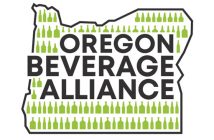Oregon’s minimum wage laws are changing our economy, and it doesn’t seem to be for the better. When analyzing Monthly Current Population Survey data from the Census Bureau for 2012, it is suspicious that we are behind the rest of the nation in teen employment, while our lowest paid workers are paid the second highest in the country.
Teens, who often hold entry-level, minimum wage jobs, are severely disadvantaged by this policy.
Oregon’s unemployment among high school graduates aged 18 to 20 tops the national charts, with a rise of more than 200 percent from 2008 to 2011.* This gigantic leap dwarfs the U.S. unemployment rate for the same demographic, which only shows an increase of around 30 percent. Our minimum wage, being tied to inflation, has increased steadily over the last four years and has been harming the bottom line for employers because of higher labor costs.
It seems impossible that increases in the minimum wage are helping employment rates among teens. Considering that Oregon’s young workers are employed at some of the worst rates in the country, it seems probable that our minimum wage laws are pushing young workers out of the labor market. Our state wage regulations should be seriously reconsidered.
* This number was corrected on 7-9-12 from “more than 300 percent” in the original post. While the rate did more than triple from 2008 to 2011, the increase from 11.1 percent to 35.4 percent is actually about 218 percent, not 300 percent.
Michael Nielsen is a research associate at Cascade Policy Institute, Oregon’s free market public policy think tank.




